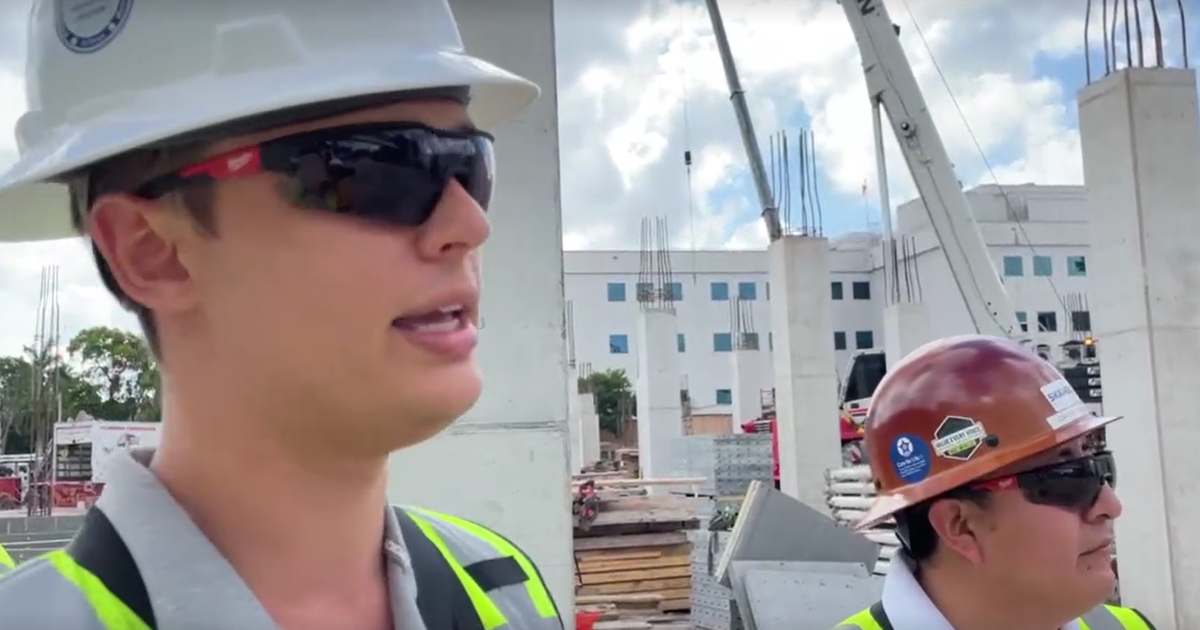Archeologists discover anchor belonging to early 20th century shipwreck in Biscayne National Park
HOMESTEAD — Archelogoists have discovered an anchor dating back to a 19th-century steamship that was swept away in an early 1900s hurricane in Biscayne National Park over the summer.
The National Park Service announced the discovery on Friday, saying that the anchor was a part of the St. Lucie, which sank in 1906 after sailing into a hurricane while carrying more than 100 people, including early Miami pioneers. According to NPS, while sinking in only 13 feet of water, 26 individuals died, making it one of the worst confirmed maritime disasters occurring in what is now Biscayne National Park.
South Florida National Parks maritime archeologist Joshua Marano found the anchor in July while visiting several archeological sites with two interns hosted at the park and funded through the Smithsonian National Museum of African American History and Culture's Slave Wrecks Project.
"This find presents an opportunity to highlight a meaningful and tangible connection between a tragedy at sea happening within the current Biscayne National Park and broader historical events and challenges happening in Miami and throughout the region," Marano stated.
According to NPS, the St. Lucie was a stern paddle-wheel steamboat built in Delaware in 1888. With three decks, the 122-foot-long vessel boated 14 staterooms and possibly carried up to 150 passengers. Drafting only 35 inches with a max speed of 10.5 knots, the steamship was ideal for navigating Florida's inland waters, spending much of its early career carrying passengers and supplies along the Indian River between Titusville and Jupiter, NPS stated.
As the development and popularity of the railroad increased throughout the Sunshine State, travel by rail eventually surpassed steamship travel in many parts of Florida, and the St. Lucie became only one of eight shallow-water vessels bought by the Florida East Coast Railway to ferry workers and supplies throughout the Florida Keys in the late 1800s. At this time, the extension of the railroad from Palm Beach to Key West at the convincing of early Miami pioneers Julia Tuttle and William Brickell spurned the rapid development of Miami in the early 20th Century.
Carrying more than 100 laborers, engineers and railroad employees' families, the St. Lucie sailed into a hurricane on October 18, 1906, while traversing between Miami and Knights Key. There, it encountered the worst part of the storm about 25 miles south of Miami near Elliott Key, when it attempted to sail close to shore and deploy anchors to try to ride it out. However, the St. Lucie capsized and forced survivors to attempt to swim to the nearby island, which was nearly inundated by the storm surge. According to NPS, while Cpt. Steve Bravo was credited with doing all that he could to save the steamship and its passengers, 26 people died when the St. Lucie capsized.
St. Lucie's hull was eventually raised, refitted and continued service in the Keys for several more years, leaving very little evidence of the hurricane's damage. While it has been rumored that the dead from the capsizing were buried on Elliott Key, the majority of those recovered were actually brought to Miami for internment, NPS stated. At least 21 bodies were recovered, and while several identified individuals were shipped to their homes or otherwise buried in private cemeteries, many were interred in two mass graves in the then-segregated Miami City Cemetery.
NPS stated that there are no current plans to raise the anchor given its size and the cost of conservation. However, the park is working to produce digital interpretations of the artifact, including a 3D rendering that would be posted online. The anchor, along with the nearby stranding site of the St. Lucie, have been documented as archeological resources and will be routinely monitored by members of the South Florida National Parks Cultural Resources program, along with more than 170 other archeological sites both above and below the water.
Park staff have begun to work with stakeholders to learn more about the vessel, identify the final resting places of the victims of its capsizing and better tell the story of Miami's development. While the final resting place of 13 people who died in the wreck have been located, the remains of several African Americans who died in the wreck have yet to be found, NPS stated.







